标签:
.首先我们的准备
1.项目
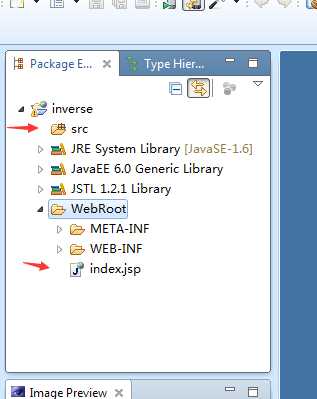
2.数据库
 数据库执行命令.sql
数据库执行命令.sql
1 /* 2 Navicat MySQL Data Transfer 3 4 Source Server : mysql123 5 Source Server Version : 50624 6 Source Host : localhost:3306 7 Source Database : inverse 8 9 Target Server Type : MYSQL 10 Target Server Version : 50624 11 File Encoding : 65001 12 13 Date: 2016-06-30 15:46:41 14 */ 15 16 SET FOREIGN_KEY_CHECKS=0; 17 18 -- ---------------------------- 19 -- Table structure for users 20 -- ---------------------------- 21 DROP TABLE IF EXISTS `users`; 22 CREATE TABLE `users` ( 23 `id` int(4) NOT NULL AUTO_INCREMENT, 24 `name` varchar(20) DEFAULT NULL, 25 `content` varchar(100) DEFAULT NULL, 26 PRIMARY KEY (`id`) 27 ) ENGINE=InnoDB DEFAULT CHARSET=utf8;


现在准备好了以上空项目和表后,我们开始逆向工程第一步
1.文字不重要,看图
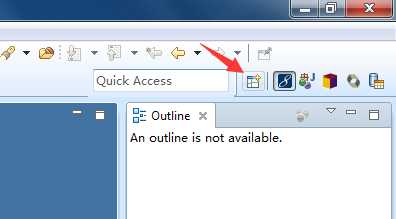
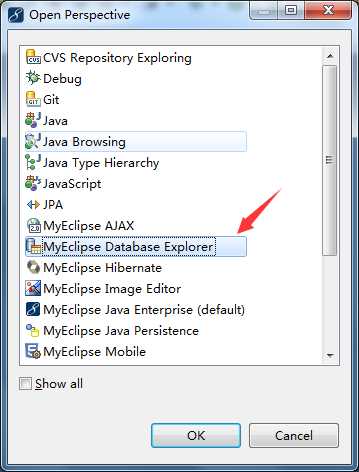
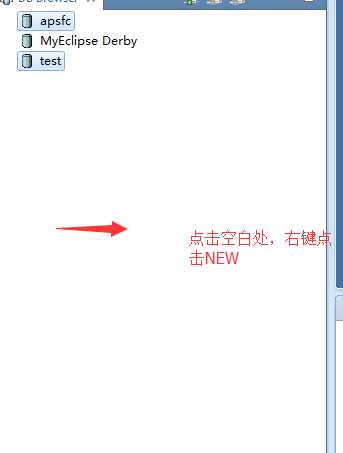

2.接下来我们来配置我们的hibernate核心jar包
右键我们的项目选择myeclipse--》 project facets-->install hibernate facet
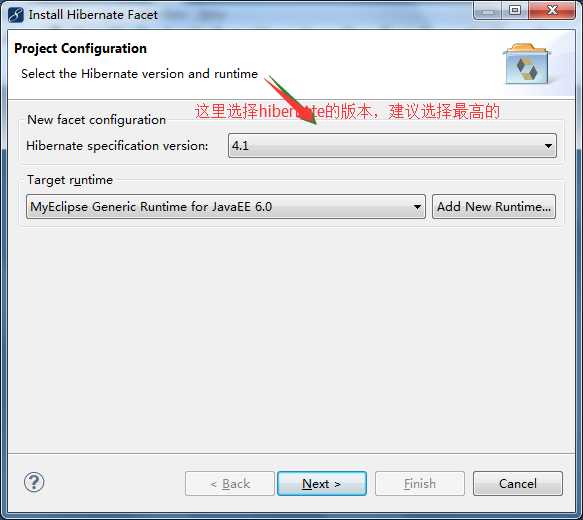

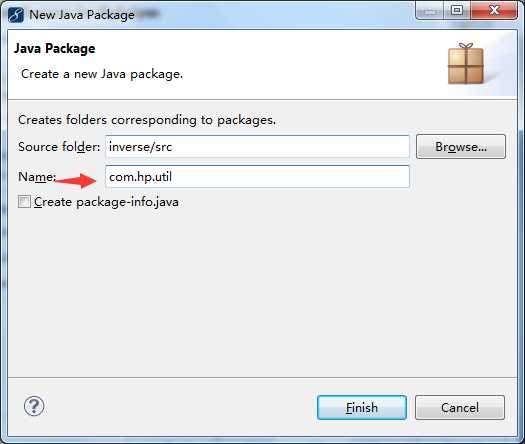
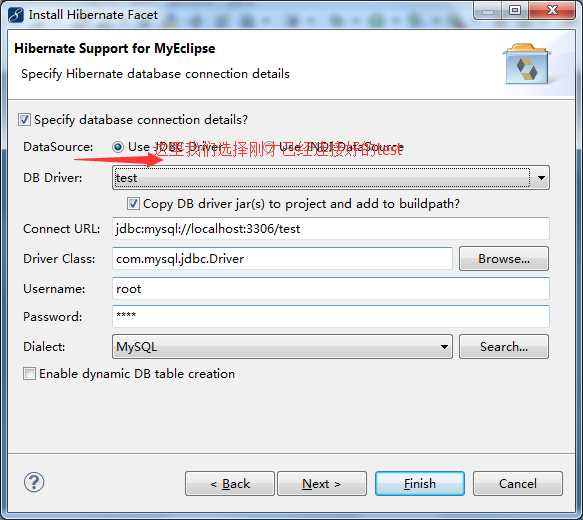
3.现在我们回到从自带的DB开始
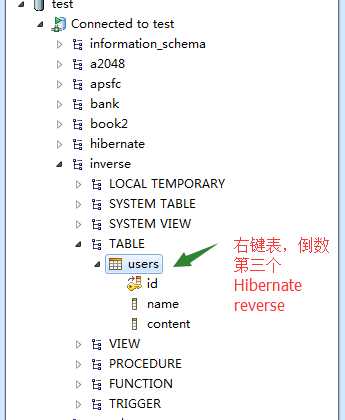
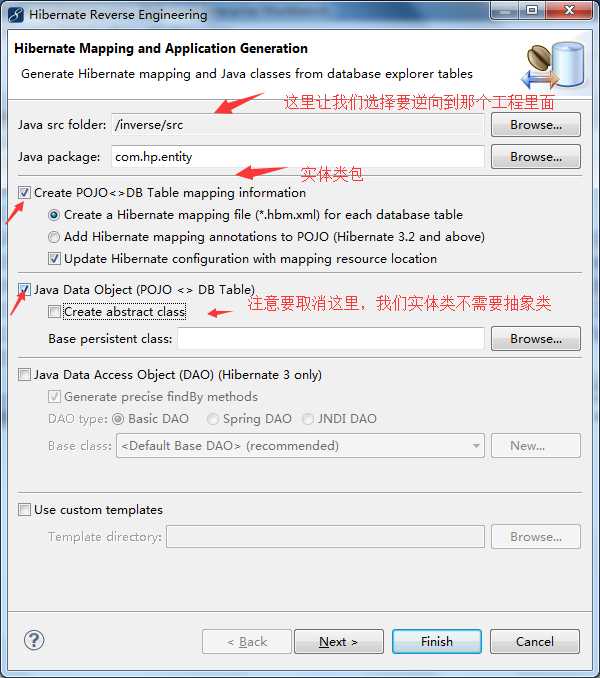

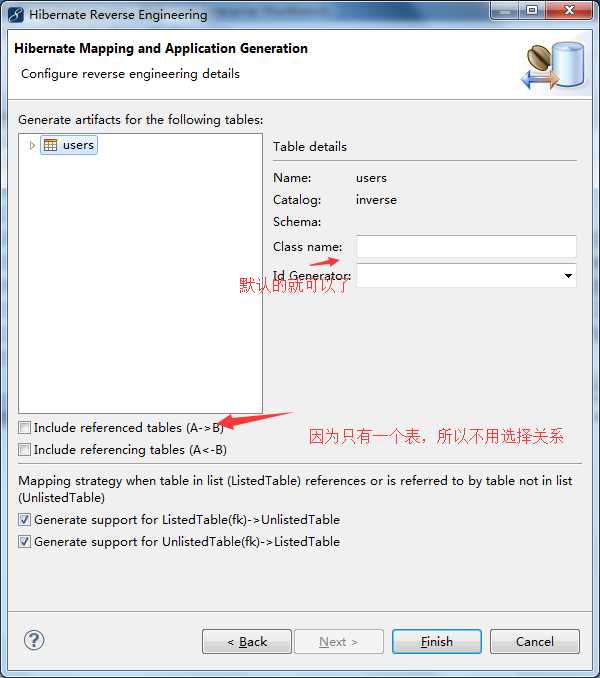
4.然后就这样就可以了,让我们来看看我们反向的实体类
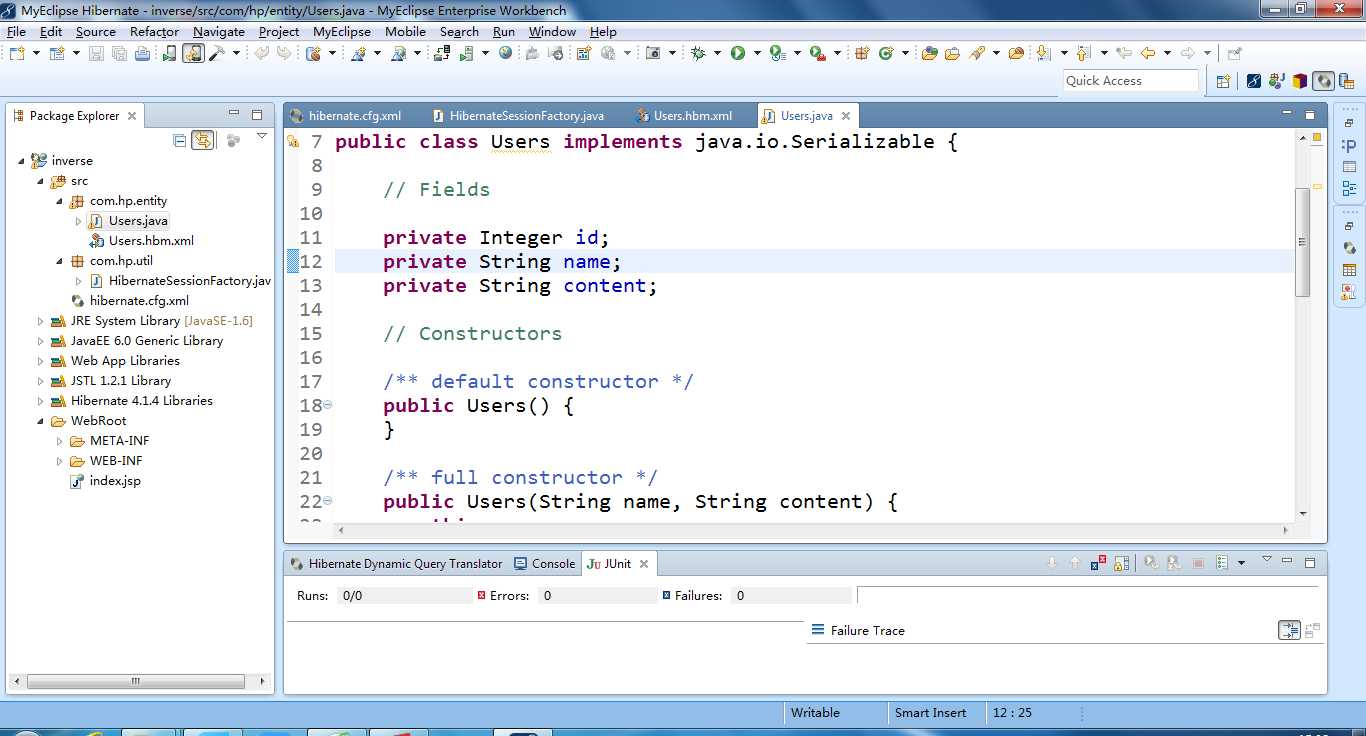
5.这样就好了,谢谢您的观看,大家一起学习
附上配置一份
hibernate.cfg.xml

<?xml version=‘1.0‘ encoding=‘UTF-8‘?> <!DOCTYPE hibernate-configuration PUBLIC "-//Hibernate/Hibernate Configuration DTD 3.0//EN" "http://www.hibernate.org/dtd/hibernate-configuration-3.0.dtd"> <!-- Generated by MyEclipse Hibernate Tools. --> <hibernate-configuration> <session-factory> <property name="dialect"> org.hibernate.dialect.MySQLDialect </property> <property name="connection.url"> jdbc:mysql://localhost:3306/test </property> <property name="connection.username">root</property> <property name="connection.password">root</property> <property name="connection.driver_class"> com.mysql.jdbc.Driver </property> <property name="myeclipse.connection.profile">test</property> <mapping resource="com/hp/entity/Users.hbm.xml" /> </session-factory> </hibernate-configuration>
HibernateSessionFactory(工具类)

package com.hp.util; import org.hibernate.HibernateException; import org.hibernate.Session; import org.hibernate.cfg.Configuration; import org.hibernate.service.ServiceRegistry; import org.hibernate.service.ServiceRegistryBuilder; /** * Configures and provides access to Hibernate sessions, tied to the * current thread of execution. Follows the Thread Local Session * pattern, see {@link http://hibernate.org/42.html }. */ public class HibernateSessionFactory { /** * Location of hibernate.cfg.xml file. * Location should be on the classpath as Hibernate uses * #resourceAsStream style lookup for its configuration file. * The default classpath location of the hibernate config file is * in the default package. Use #setConfigFile() to update * the location of the configuration file for the current session. */ private static final ThreadLocal<Session> threadLocal = new ThreadLocal<Session>(); private static org.hibernate.SessionFactory sessionFactory; private static Configuration configuration = new Configuration(); private static ServiceRegistry serviceRegistry; static { try { configuration.configure(); serviceRegistry = new ServiceRegistryBuilder().applySettings(configuration.getProperties()).buildServiceRegistry(); sessionFactory = configuration.buildSessionFactory(serviceRegistry); } catch (Exception e) { System.err.println("%%%% Error Creating SessionFactory %%%%"); e.printStackTrace(); } } private HibernateSessionFactory() { } /** * Returns the ThreadLocal Session instance. Lazy initialize * the <code>SessionFactory</code> if needed. * * @return Session * @throws HibernateException */ public static Session getSession() throws HibernateException { Session session = (Session) threadLocal.get(); if (session == null || !session.isOpen()) { if (sessionFactory == null) { rebuildSessionFactory(); } session = (sessionFactory != null) ? sessionFactory.openSession() : null; threadLocal.set(session); } return session; } /** * Rebuild hibernate session factory * */ public static void rebuildSessionFactory() { try { configuration.configure(); serviceRegistry = new ServiceRegistryBuilder().applySettings(configuration.getProperties()).buildServiceRegistry(); sessionFactory = configuration.buildSessionFactory(serviceRegistry); } catch (Exception e) { System.err.println("%%%% Error Creating SessionFactory %%%%"); e.printStackTrace(); } } /** * Close the single hibernate session instance. * * @throws HibernateException */ public static void closeSession() throws HibernateException { Session session = (Session) threadLocal.get(); threadLocal.set(null); if (session != null) { session.close(); } } /** * return session factory * */ public static org.hibernate.SessionFactory getSessionFactory() { return sessionFactory; } /** * return hibernate configuration * */ public static Configuration getConfiguration() { return configuration; } }
标签:
原文地址:http://www.cnblogs.com/thehugo/p/5630241.html